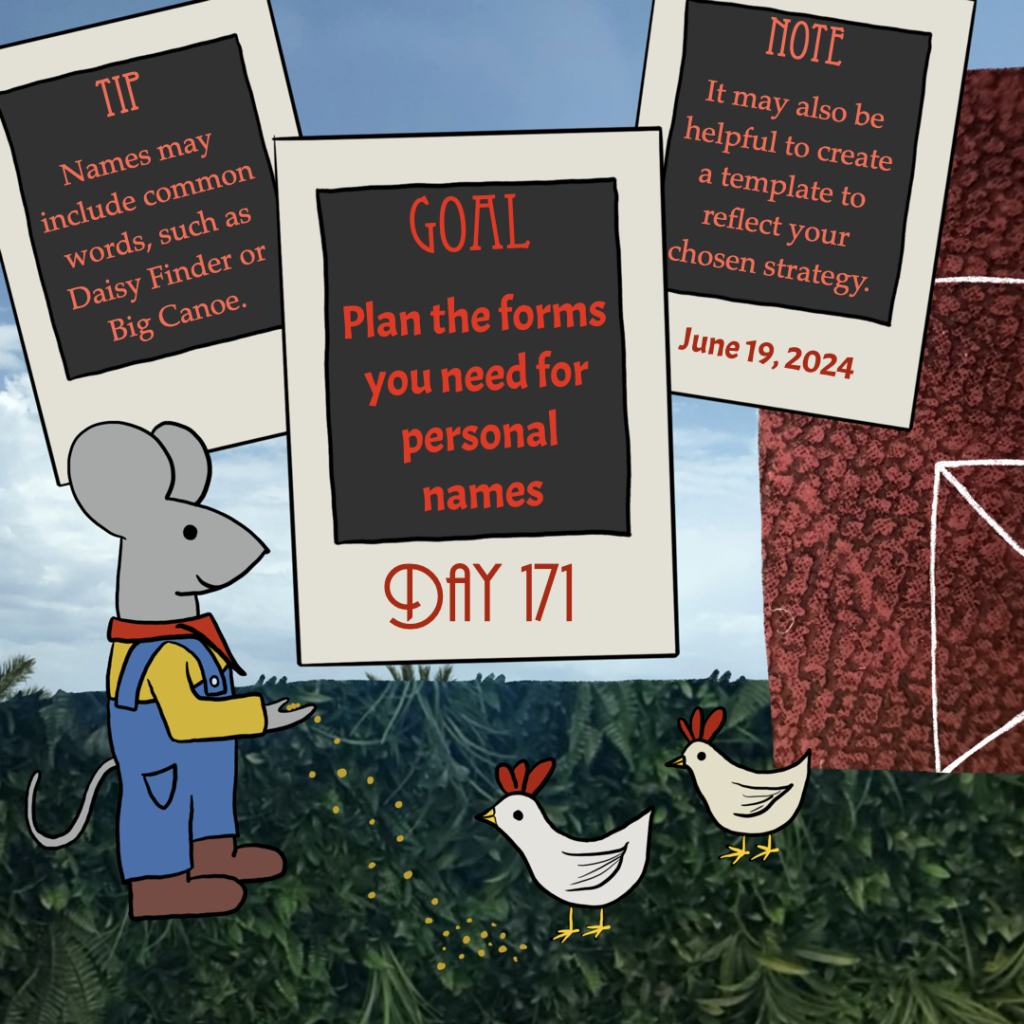
Goal: Plan the forms you need for personal names
Note: It may also be helpful to create a template to reflect your chosen strategy.
Tip: Names may include common words, such as Daisy Finder or Big Canoe.
Work focus: Organize/Plan/Structure
Decide which personal naming strategy (or strategies) you will move forward with and then make a list of the forms you need to create to support that strategy. Depending on what you’ve decided, it may be helpful for you to create a template.
For instance, when creating names for our rabbit speakers of Engála, David and I put together a basic template to reflect the semi-complex naming strategy we chose for them: (1) a given name decided by the parents that is intended to reflect something about the rabbit or the situation in which they were born; (2) a clan name, which larger than a family unit; (3) a family name, which is our equivalent of a last name or surname; (4) the season in which the rabbit was born; and (5) their litter number, which reflects their birth order within their litter. With all five components, the names get quite lengthy, so it helped to have that template set up with options listed for each part of the template to make the naming process a little more efficient.
Personal names may include common words, so you might come up with names like Daisy Finder, Big Canoe, Bright Star, or Falling Rain. But you might also choose to go a separate route, where names are composed differently. They may reduce making any origins harder to identify, they may be borrowed from other cultures (if that makes sense for your conworld), or they may be phono-aesthetically pleasing units that don’t have lexical origins or meanings.
Select and plan out your strategy today, and make a list of any new forms you might need to create to support your vision.
